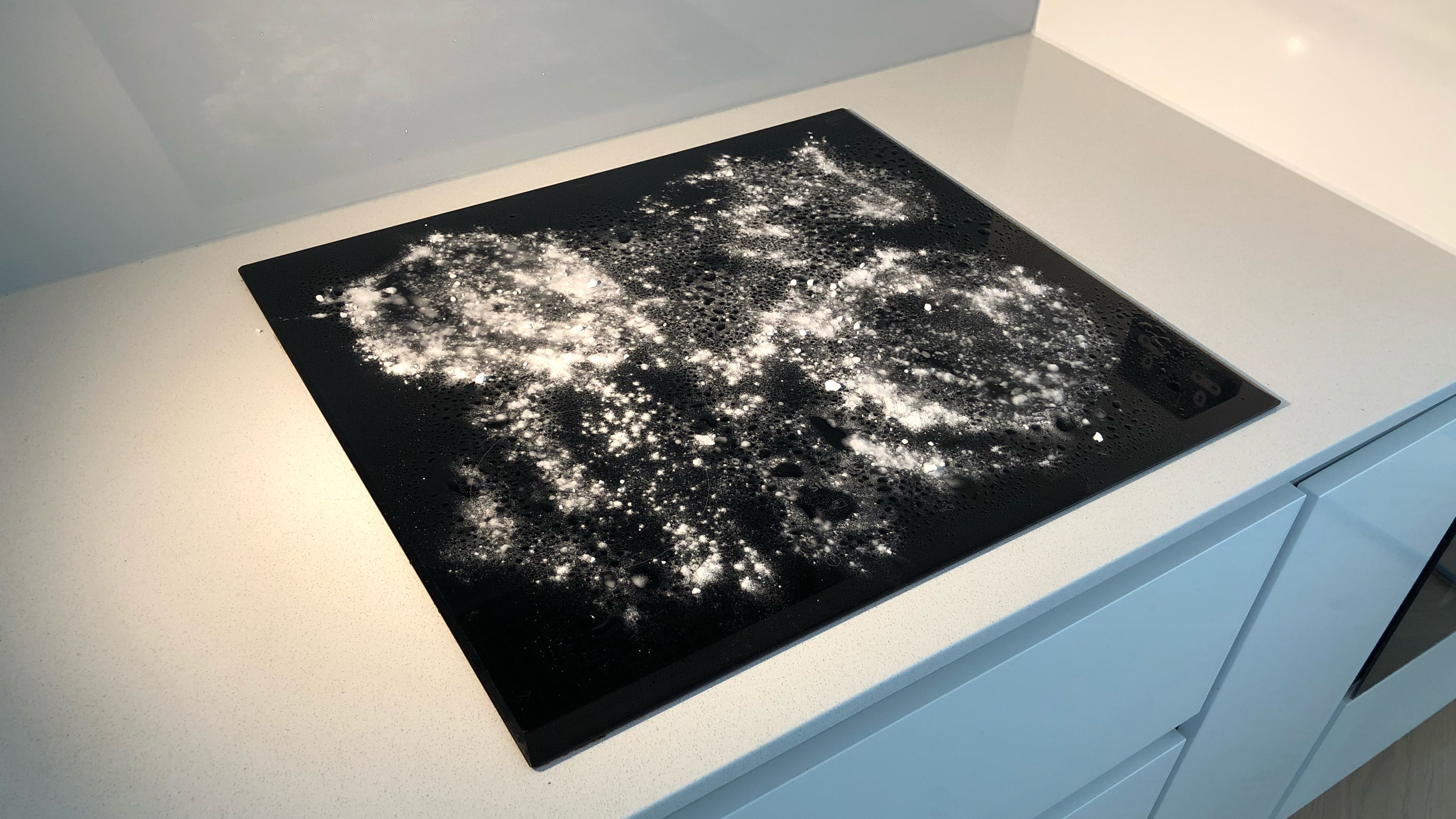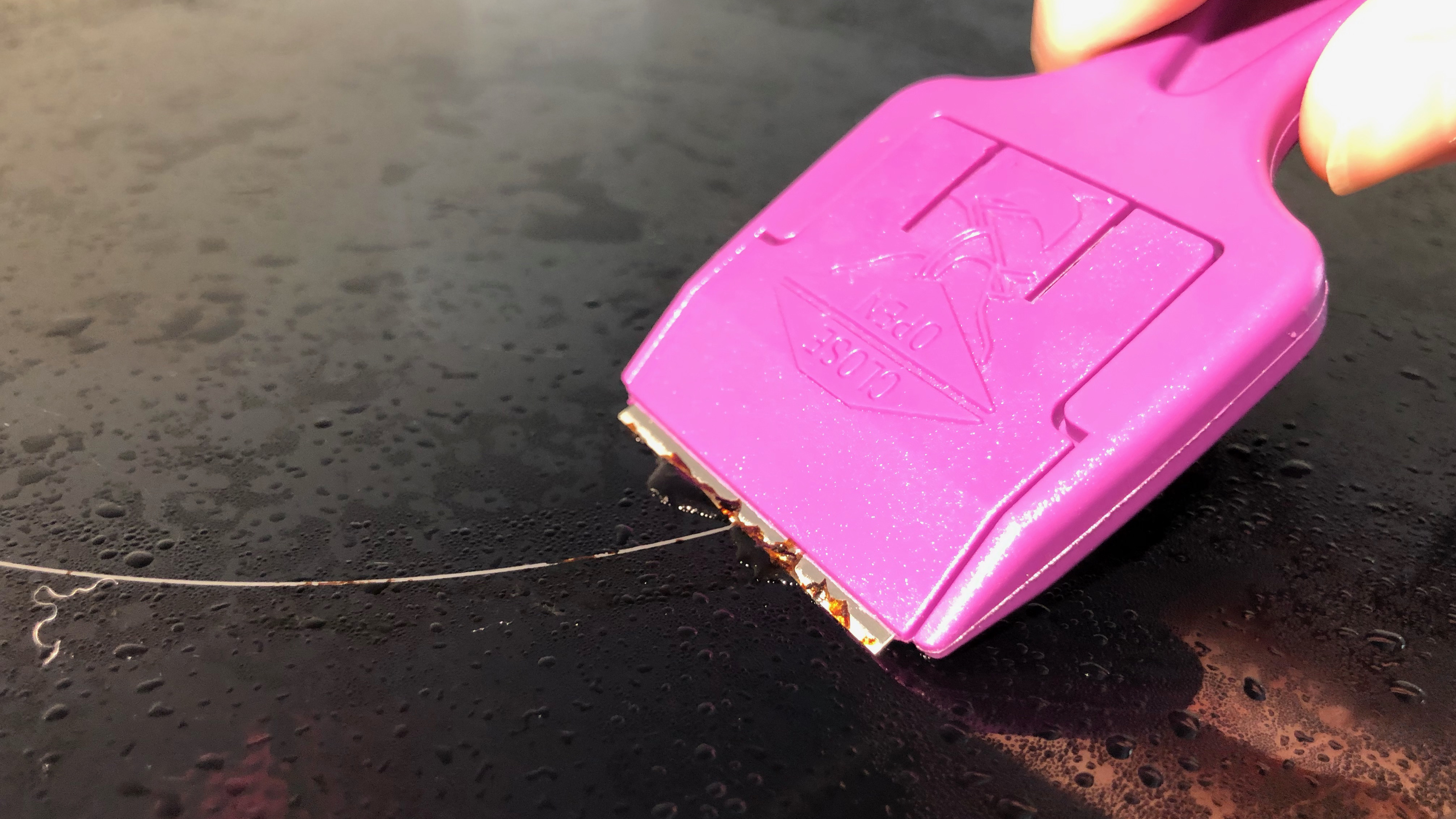How to clean a glass stove

Stovetops come in for a real battering, so knowing how to keep them clean can make the difference between a surface covered in burnt-on grime or one that sparkles. Glass stovetops are a particular challenge, just like induction cooktops, as food residue gets burnt on, and standard off-the-shelf products often fall short.
However, with the right products and know-how you can get your glass stovetop back to its former glory. Although it might sound too good to be true, these stubborn marks can be removed. But, it might take more than one go and a bit of elbow grease to shift the marks. With our step-by-step guide, we take you through what you’ll need to do.
How to quickly clean your glass stove

Microfiber cloth or sponge
Stovetop degreaser
White distilled vinegar
1. For a daily clean, once your stove is cool remove any obvious food debris with a damp cloth.
2. Next, using a stove top degreaser, spritz the surface and leave it to sit for about a minute (or however long the brand recommends). If you want to opt for something more sustainable, fill a spray bottle with white distilled vinegar and use that instead.
3. Once time is up, wipe it clean with a damp microfiber cloth or sponge. If using a sponge, remember to only use the soft side.
4. Then buff away any streaks with a dry microfiber cloth. This method will shift any immediate grease and grime.
How to deep clean your glass stove

White distilled vinegar
Baking soda
Towels
Rubber gloves
Microfiber cloth
If you’ve got a build-up of residue on your glass stove, then this is the method to follow. It’s good practice to do this once a month to stop it getting in the same state in the future.
1. If you want to use a stovetop cleaner, simply follow its instructions. This usually involves applying a cream or paste and then rinsing it off. If you want to be more sustainable, spray the surface of the stove liberally with white distilled vinegar.
Get instant access to breaking news, the hottest reviews, great deals and helpful tips.
2. Then, sprinkle baking soda over the vinegar, again be generous particularly in areas where there’s a lot of residue. You will notice it starts to foam.
Note: Baking soda is said to be abrasive enough to scratch glass when scrubbed, however we didn't experience this for ourselves. If you're concerned about scratches, skip this step.
3. Next, submerge a couple of towels in some hot water, remembering to wear rubber gloves to protect yourself. Wring the towels out and lay them flat on top of your stove, covering the whole surface.

4. Leave the towels for 15-30 minutes, depending on how dirty your glass stove is.
5. Once time is up, remove the towels and wipe away any residue with a damp microfiber cloth.
6. Give the surface a final spritz with the vinegar. This will help shift any hardened baking soda.
7. Rinse and buff any streaks away with a microfiber cloth.
How to get rid of burn marks

Scraper
White distilled vinegar
Towels
Microfiber cloth
Burn marks are notoriously difficult to shift from a glass stove. You need a combination of the right tools and elbow grease, but it can be done and here’s how. Some suggest using a loose razor blade to scrape this residue off, however we do not recommend this method as it’s dangerous and can damage the glass.
Instead, buy a scraper tool designed for the job, such as the Cerama Bryte Scraper Tool. Be sure to check your manual to see if your manufacturer advises against using a scraper tool before doing this. Some glass is treated and the blade could damage it.
1. When the stove is cool, spray white distilled white vinegar over the burn marks.
2. Next, submerge a couple of towels in hot water, wearing gloves for protection, and wring them out and lay them flat over the burn marks.
3. Leave it to sit for 10 minutes to moisten the residue.
4. Next, gently scrape at the residue using the scraper. Angle it at 30 degrees to avoid scratching the surface and use a pushing motion. This should slowly chip away the burnt residue.
5. Wipe the glass stove clean with a damp microfiber cloth and buff.
You may need to repeat the above methods to get your glass stove looking like new again, but it’s well worth it. You should now have a sparkling glass stove, remember to keep cleaning it regularly!
Weiman Cooktop Cleaner Kit: $19 @ Amazon
This stovetop cleaner kit comes complete with polish (10oz), scrubbing pad and scraper tool. Remove burnt-on food spills with the razor scraper tool and scratch-free scrubbing pad for a shiny and streak-free finish.
How often should you clean your stove top
Not to sound demanding, but your glass stove will need a quick clean after every use once cooled.
This is because unseen residue can build-up from spitting. It’s also best to remove any food debris or spills as soon as possible to prevent it from burning on when you next use the elements. With regular use, it’s good practice to give your glass stove a thorough clean once a month as well. It’s a lot of effort, but by keeping up with this you will prevent any stains from building up in the future, making cleaning it a much easier task.
If you can see burn marks appearing around the elements, that’s a sign that your stovetop needs some TLC. As mentioned above, it’s important to only clean a glass stove once it has completely cooled to avoid injury and damaging the appliance.
First, check if your stove comes with any cleaning instructions in its manual. It’s always best to follow your manufacturer's recommendations for method and cleaning products. If none are given, follow these steps.

Tips to keep your glass stove clean
- Wipe it down after every use, being sure to let it completely cool first.
- Keep a third eye on your pots and pans, try not to let anything boil over or spill.
- Use soft materials to clean, such as a microfiber cloth or the soft side of a sponge, anything abrasive can scratch the glass.
- Only use designated cooktop cleaners or the ingredients we recommend above; do not use bleach or ammonia as it can damage the stove and even discolor it.

Katie Mortram used to be a Homes Editor for Tom's Guide, where she oversaw everything from kitchen appliances to gardening tools, as well as smart home tech. Specializing in providing expert advice for cleaning and home manintenance, she now works as Household Advice Editor for Good Housekeeping.

